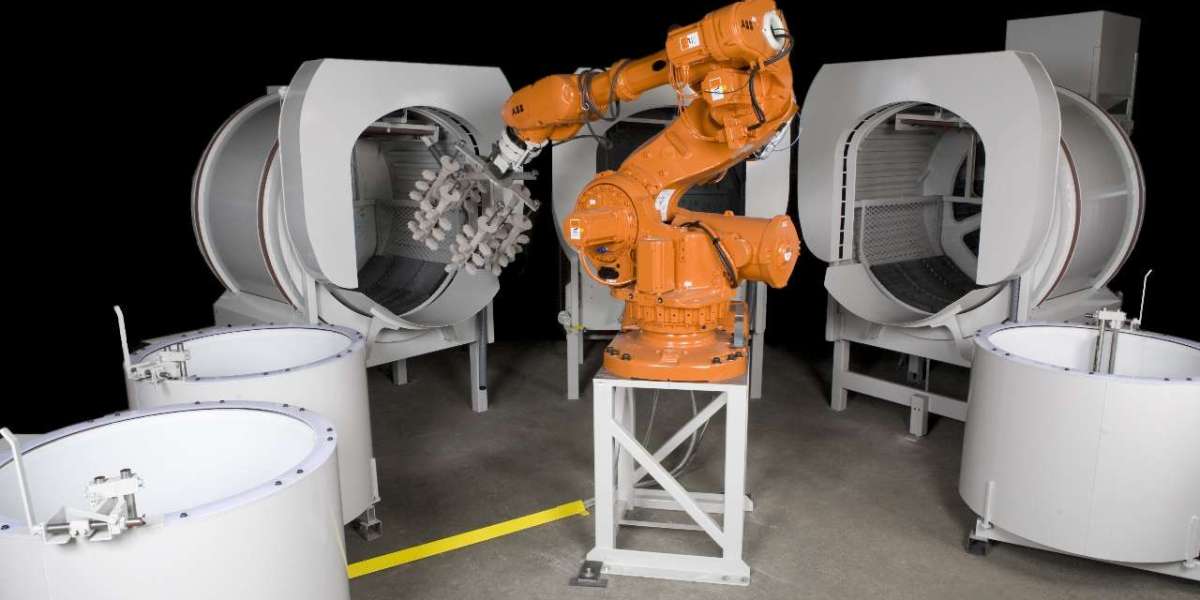Articulated Robots Market Pain Points: Challenges Slowing Down Growth and Adoption
The articulated robots market has witnessed substantial growth over recent years, driven by increasing automation needs across industries such as automotive, electronics, healthcare, and manufacturing. These robots, characterized by their rotary joints and flexibility mimicking the human arm, offer precise, efficient, and repeatable operations. However, despite their advantages, the articulated robots market faces several pain points that hinder its full potential and wider adoption. Understanding these challenges is crucial for stakeholders to strategize better and drive the market forward.
1. High Initial Investment Costs
One of the most significant barriers to the adoption of articulated robots is the high upfront cost. Purchasing an articulated robot, along with its associated peripherals, software, and installation, often requires a substantial capital investment. Small and medium-sized enterprises (SMEs), which form a large portion of manufacturing sectors worldwide, frequently find it challenging to justify or afford these costs. Beyond the purchase price, additional expenses such as integration, programming, and workforce training add to the financial burden.
2. Complexity of Integration
Integrating articulated robots into existing production lines can be complicated. Factories often run diverse processes with legacy equipment, and incorporating robotics requires seamless coordination with existing systems, software, and workflows. The complexity increases with customization needs and specific application requirements. Lack of standardized integration protocols means companies must rely heavily on expert integrators or robot manufacturers, which can delay deployment and escalate costs.
3. Skilled Workforce Shortage
The growing demand for robotic automation intensifies the need for skilled professionals who can program, operate, and maintain articulated robots. However, there is a notable shortage of trained personnel in robotics, automation, and related fields globally. This talent gap creates challenges for companies to implement and sustain robotic operations effectively. Additionally, existing workers may resist transitioning to automated processes due to fear of job loss or unfamiliarity with new technology, further complicating adoption.
4. Maintenance and Downtime Issues
Articulated robots are sophisticated machines with multiple moving parts and require regular maintenance to ensure optimal performance. Unexpected breakdowns or failures can lead to significant downtime, disrupting production schedules and causing financial losses. Moreover, diagnosing and repairing faults may demand specialized knowledge and tools, which are not always readily available on-site. This creates operational vulnerabilities, especially for smaller enterprises with limited technical support infrastructure.
5. Cybersecurity Concerns
As articulated robots increasingly connect to industrial networks and the Internet of Things (IoT), they become potential targets for cyberattacks. Unauthorized access or hacking can lead to theft of proprietary data, sabotage, or even safety hazards if robots behave unpredictably. Ensuring robust cybersecurity measures is critical but often overlooked in many industries adopting automation rapidly. Developing and implementing comprehensive cybersecurity protocols for robotic systems is still evolving, presenting a significant pain point.
6. Safety and Regulatory Challenges
While articulated robots enhance workplace efficiency, their integration into human workspaces raises safety concerns. Robots with high speed and force can pose injury risks if proper safeguards are not implemented. Compliance with occupational safety standards and regulations is mandatory but varies by country and industry, making it complex for manufacturers to design universally applicable robotic solutions. Additionally, evolving safety norms require continuous updates to robot systems, increasing the cost and complexity of compliance.
7. Limited Flexibility in Some Applications
Although articulated robots are known for their flexibility compared to other robotic types, they still face limitations in adapting to highly variable or complex tasks without significant reprogramming or retooling. In industries requiring frequent changes in product design or customization, the downtime and effort to reconfigure robots can be substantial. This limits their appeal in fast-paced or small-batch production environments.
8. High Dependence on Supply Chain Stability
The articulated robots market relies heavily on a complex global supply chain for components such as sensors, motors, controllers, and software. Disruptions due to geopolitical tensions, pandemics, or raw material shortages can delay production and delivery of robotic systems. These interruptions increase lead times and costs, impacting project timelines and customer satisfaction.
9. Technology Standardization and Interoperability Issues
A lack of industry-wide standards for communication protocols, interfaces, and software platforms among robot manufacturers creates interoperability challenges. Companies using robots from different vendors or integrating robots with other automated systems often face compatibility problems. This fragmentation complicates maintenance, upgrades, and scalability, slowing down widespread adoption.
10. Return on Investment (ROI) Uncertainty
For many businesses, especially SMEs, justifying the ROI of investing in articulated robots is difficult. Benefits such as increased productivity, precision, and reduced labor costs are often balanced against the high initial investment, maintenance, and operational expenses. Additionally, the time required to achieve payback can be lengthy, making companies hesitant to commit to automation projects without clear, quantifiable outcomes.
Conclusion
While articulated robots hold immense promise for transforming manufacturing and various other sectors, the market’s growth is restrained by multiple pain points. High costs, integration challenges, workforce shortages, maintenance needs, cybersecurity risks, safety regulations, and technology fragmentation are key issues that industry players must address. Overcoming these barriers requires coordinated efforts among manufacturers, integrators, policymakers, and educational institutions to develop affordable, user-friendly, secure, and standardized robotic solutions.
With advancements in AI, machine learning, and IoT integration, the articulated robots market is poised for innovation that could mitigate many current pain points. Addressing these challenges strategically will enable broader adoption, unlocking efficiency gains and competitive advantages for businesses worldwide.








